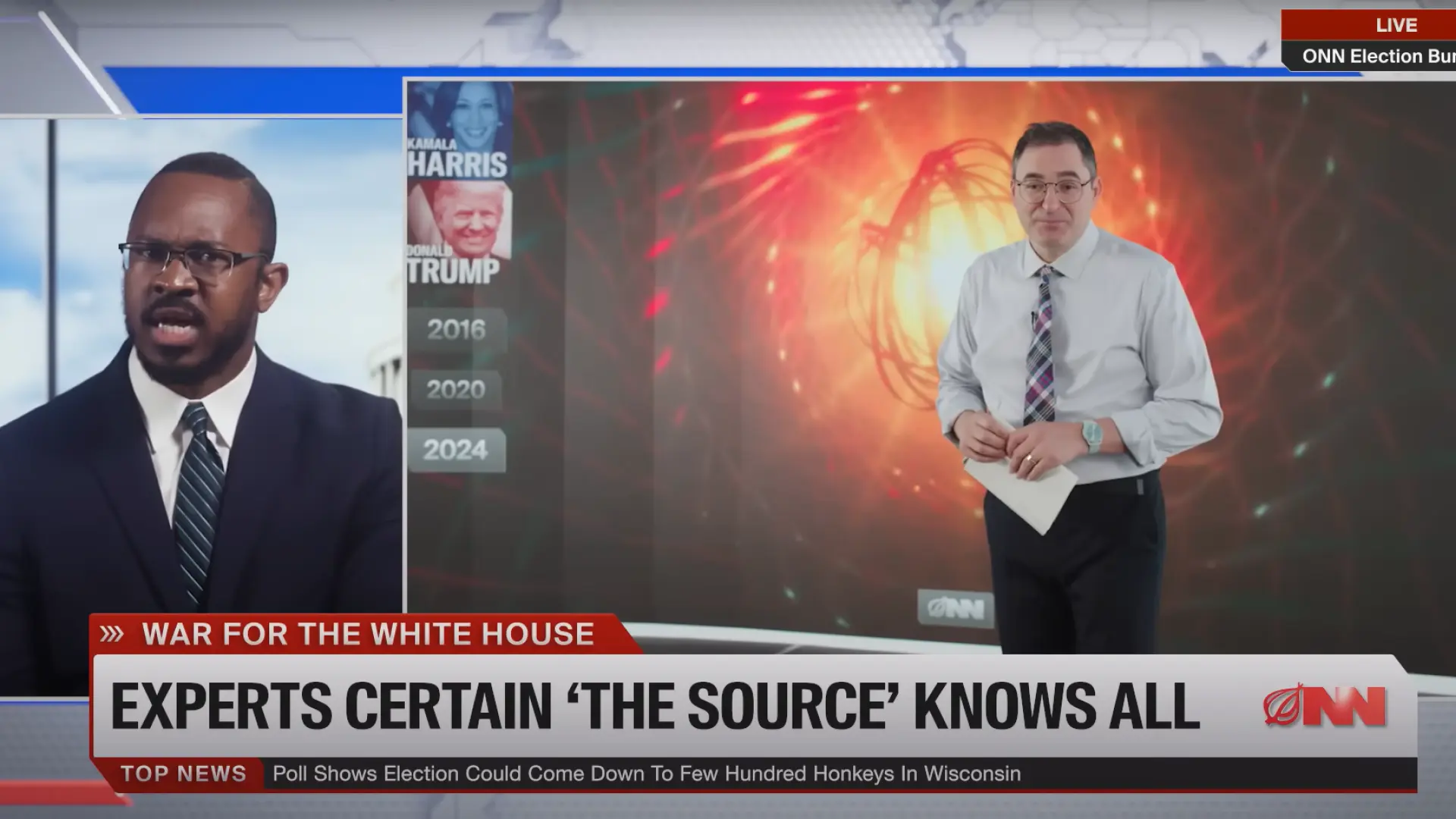The political analyst of the U.S. channel ONN, Jason Copeland, analyzed by means of an interactive map of the trends in the presidential polls. shortly before the vote that ultimately gave the victory to Donald Trump.
To explain why the vote fluctuates in the swing states and why. the same person can change his or her mind and political leanings.The project, which is based on a screen, traveled inside an imaginary resident of Pennsylvania, one Nick Camden.
“We’re seeing some really interesting trends in a lot of key states,” the analyst says. “Let’s start with Pennsylvania with its coveted 19 electoral votes. and I want to focus for a moment on Erie County here,” he says as he zooms around the map, first on the state, then on the county, on a district and finally on a particular house.
“Now I want to take us inside a room. This is Nick Camden, 37, registered independent for Hilary in 2016 and for Trump in 2020. Which way is he going to go in 2024? It’s really hard to say at this point, it’s too early,” the analyst explains.
“Is there anything that might indicate what decision he will make?“, asks the presenter.
“This is a very ordinary body, from a predominantly white small town, it has the lungs, it has the vascular system, the heart, but I actually want to show you what’s in here.“, says the analyst as the set screen shows the subject’s organs, all the way to the brain.
“This is the neocortex and the amygdala, these are areas of the brain responsible for regulating emotions and memory, so let’s play with a couple of scenariosFor example, if this guy remembers his grandmother and she took him to an Al Gore rally in 1999, that’s a win for the Democrats,” Jason Copeland notes.
On the other side of the brain is “the area that is associated with social interaction and groups and we’ve seen it turn on when Nick goes out for beers. with his Trump-supporting coworkers,” the analyst exemplifies.
Thus, this average voter moves between one side and the other guided by emotions, with the possibility of voting for one or the other without being able to predict it. or with any small detail as a trigger for their decision.
From there both analyst and presenter move on to more joking questions: “Let’s go past the rib cage, let’s go to the lungs, let’s go to the heart, let’s go to the tumorsHealth will be an important issue in these elections,” the expert adds. “Let’s move on to DNA, to what we call the source, the origin of life, where all of humanity’s answers lie.”
“And can we go beyond that?” the presenter asks. “No,” Copeland replies. “Why not?” his partner insists. “Because it scares me“, the expert answers again.
“But what we can do is move away, out of the neighborhood, out of the state, out of the planet, out of the solar system… out to the edges of our cosmos and see ultimately how insignificant our species ultimately is. and how insignificant our little lives are,” Copeland concludes.


